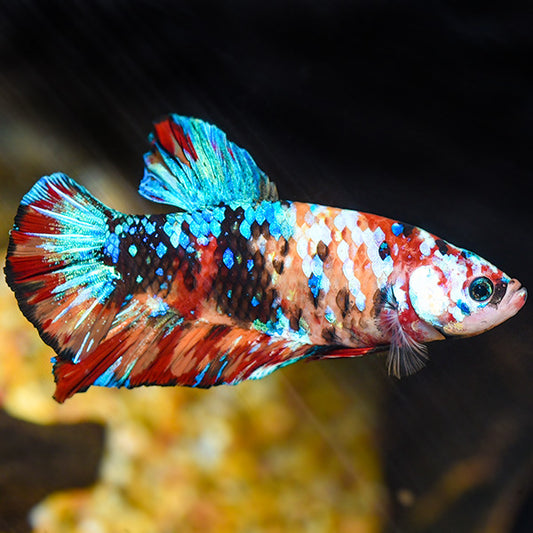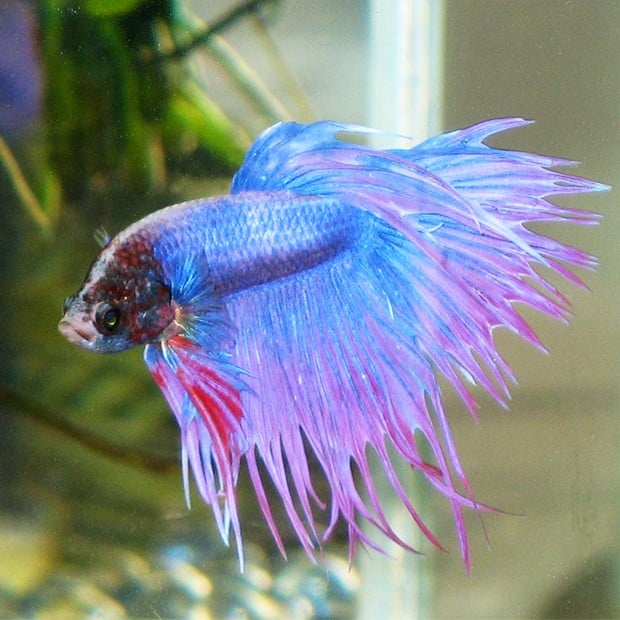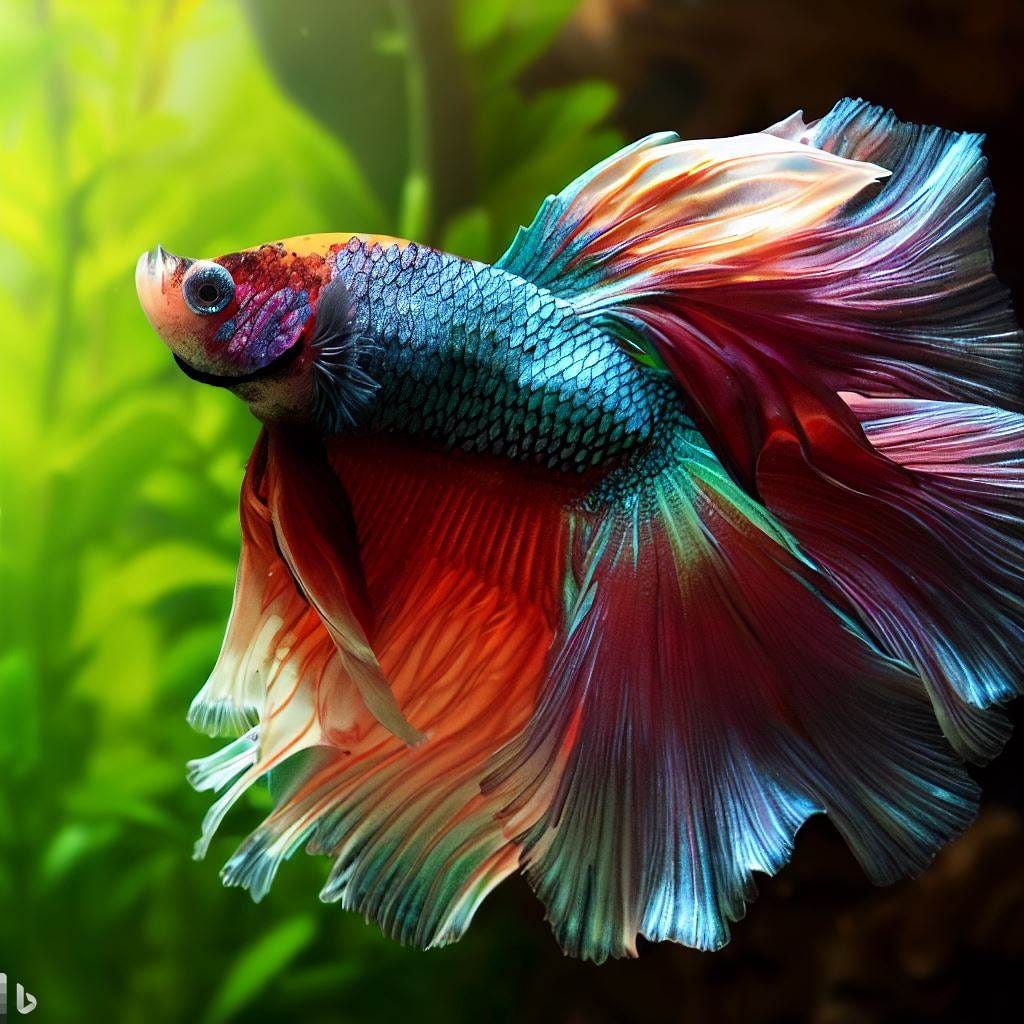The Ultimate Betta Fish Care Guide for New Family Pet Owners
The Ultimate Betta Fish Care Guide for New Family Pet Owners
Blog Article
Breeding Betta Fish: a Comprehensive Step-By-Step Overview to Efficiently Raising Baby Bettas From Eggs to Adulthood
Breeding Betta fish is a meticulous undertaking that requires careful preparation and execution to make sure the successful advancement of fry from eggs to develop fish. Choosing genetically diverse breeding sets with preferable attributes is only the start; creating an optimal environment and recognizing the complexities of the breeding procedure are similarly critical. As the male Betta carefully constructs a bubble nest and guards the valuable eggs, the subsequent stages of treatment and shift need focus to information and expertise of finest practices. Exactly how does one navigate the difficult yet satisfying course of supporting these dynamic creatures to the adult years?

Picking Breeding Pairs
When beginning on the journey of reproducing Betta fish, picking the best breeding sets is vital to accomplishing preferable characteristics and a healthy lineage - betta fish. The primary step in this procedure is to determine the particular traits you desire to enhance or protect, such as color, fin kind, and body form. It is vital to pick genetically diverse sets to stay clear of inbreeding, which can cause health and wellness issues and unfavorable characteristics
Evaluate potential reproducing candidates very carefully. A healthy and balanced male Betta should show lively shades, an active temperament, and well-formed fins, while the lady needs to likewise show vibrant coloration and a rounded belly, suggesting readiness for spawning. Observing the character of both fish is important, as aggressive or extremely timid individuals might not breed successfully.
Keeping documents of the parent fish's ancestry can help you track genetic qualities and potential issues. Inevitably, spending time in the selection process will considerably enhance the possibility of creating strong, vibrant children that satisfy your breeding goals.

Preparing the Breeding Container
Producing an optimum reproduction atmosphere is a vital step after choosing suitable pairs for Betta fish. The breeding tank ought to be specifically made to provide comfort and stimulate the natural breeding behaviors of the fish. Beginning with a container dimension of at least 10 gallons to ensure ample space for both the male and women Bettas.
Preserve a gentle filtration system to keep the water tidy while avoiding solid currents that can emphasize the fish. In addition, an air rock can be contributed to give oxygenation without interrupting the water surface area too a lot.
Temperature level law is crucial; go for a secure series of 78-82 ° F(25-28 ° C) using a trustworthy heating system. The pH level must be preserved in between 6.5 and 7.5, and normal water modifications are essential to ensure high water quality.
Include drifting plants or spawning sponges to create hiding spots for the female, while additionally urging bubble nest structure by the male - betta fish. Guarantee the container is totally free from sharp decors and any prospective dangers, as the welfare of the fish ought to always be prioritized during this critical stage of reproduction.
The Reproduction Refine
Commonly, the reproducing procedure for Betta fish involves a series of unique and evident habits that suggest readiness for recreation. The male Betta begins by building a bubble nest at the water's surface area, which acts as a site for the fertilized eggs. This check it out nest is vital, as it offers a safe setting for the eggs until they hatch.
When the nest is developed, the male will certainly display courtship actions, such as flaring his fins and displaying dynamic shades to attract the lady. The lady, upon picking up the male's readiness, will certainly react by displaying upright stripes along her body, signaling her receptiveness.
The fertilized eggs More hints after that fall to the bubble nest, where the male carefully gathers and returns them to the nest. Following this, the male assumes duty for protecting the nest and guaranteeing the safety and security of the eggs till they hatch, generally within 24-36 hours.
Caring for Betta Fry
Looking after Betta fry calls for careful focus to their environment and nourishment to ensure healthy and balanced growth and growth. After hatching, Betta fry are extremely small and at risk, requiring a steady and clean environment. Maintaining a water temperature between 78 ° F and 80 ° F is crucial, as Betta fry thrive in cozy conditions. In addition, ensure that the water is devoid of harmful toxins; normal water modifications of 10-20% are recommended to keep optimum water top quality.
Feeding Betta fry is similarly crucial. Originally, they ought to be provided infusoria or finely smashed premium fry food, as their mouths are also small to handle larger fragments. As they expand, you can progressively introduce bigger foods, such as infant salt water shrimp or powdered flakes, to ensure they receive sufficient nutrition. Feed them little amounts numerous times a day, bewaring not to overfeed, which can bring about water quality issues.
Transitioning to Grownup Bettas
As Betta fry mature, transitioning them to adult pop over to these guys Bettas is an important stage that requires careful management of their atmosphere and social interactions. This process typically begins when the fry reach around six weeks old, whereupon they can be gradually introduced to a more structured living setting.
To promote this change, it is vital to guarantee that the water parameters-- such as temperature level, pH, and ammonia levels-- are optimal and secure. Adult Betta fish flourish in warm water (around 78-80 ° F) with a pH of 6.5 to 7.5. Progressively adapt the fry to these conditions to decrease stress and anxiety.
Social communications are another key factor; man Bettas are notoriously territorial and hostile. For that reason, it is suggested to different males into private tanks as they develop. Women Bettas can be housed together, however care needs to be required to monitor for signs of aggression.
In addition, dietary changes ought to be made as the fry grow. Include top notch pellets and live foods to sustain their development and health and wellness. By handling these factors efficiently, you can advertise an effective shift to the adult years for your Betta fish.

Final Thought
Effective reproduction of Betta fish calls for mindful attention to information throughout the whole procedure, from selecting genetically diverse pairs to giving optimal care for fry. Additionally, a well balanced diet plan and gradual adjustment to adult settings are critical for the growth and growth of Betta fish.
Report this page